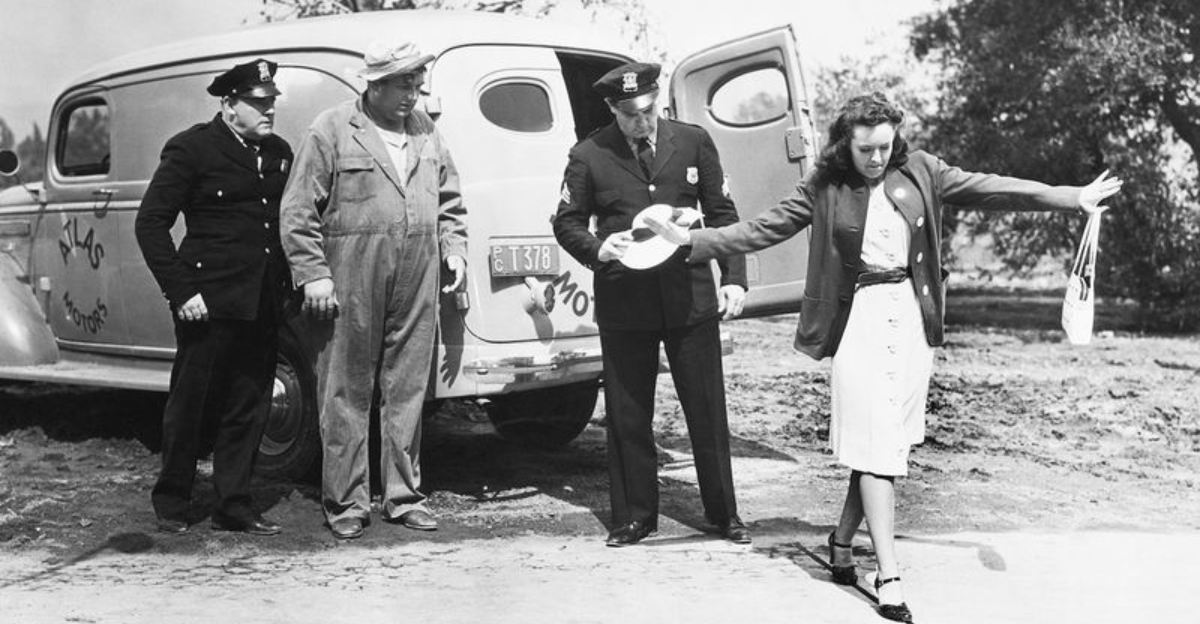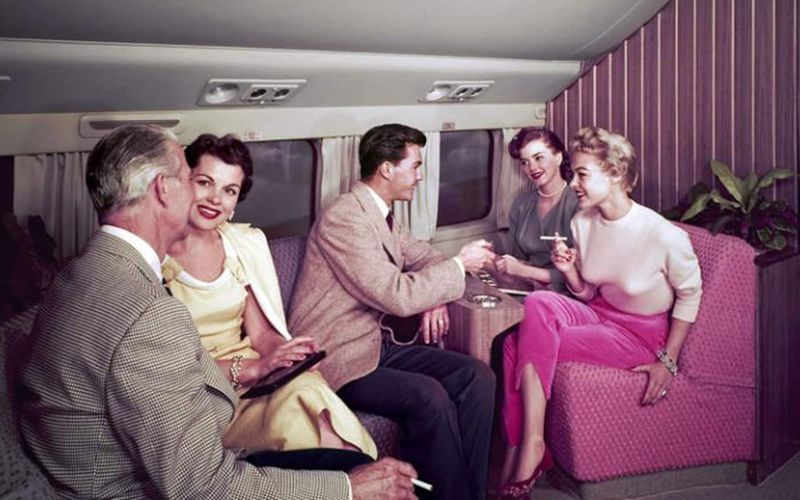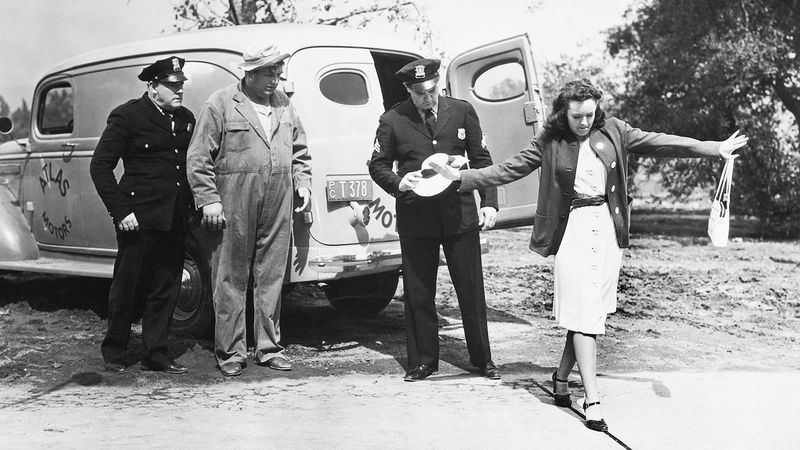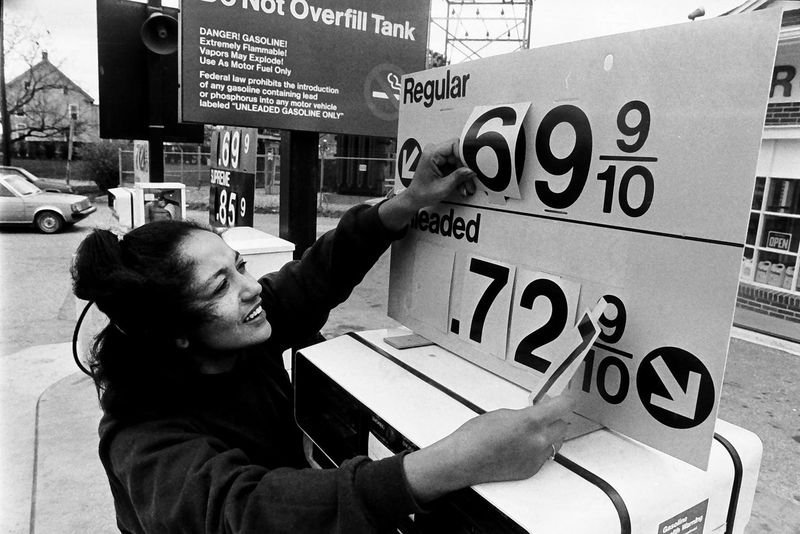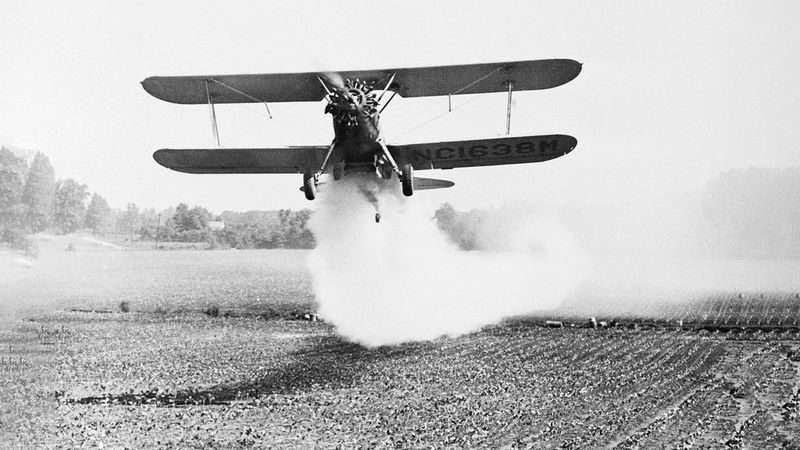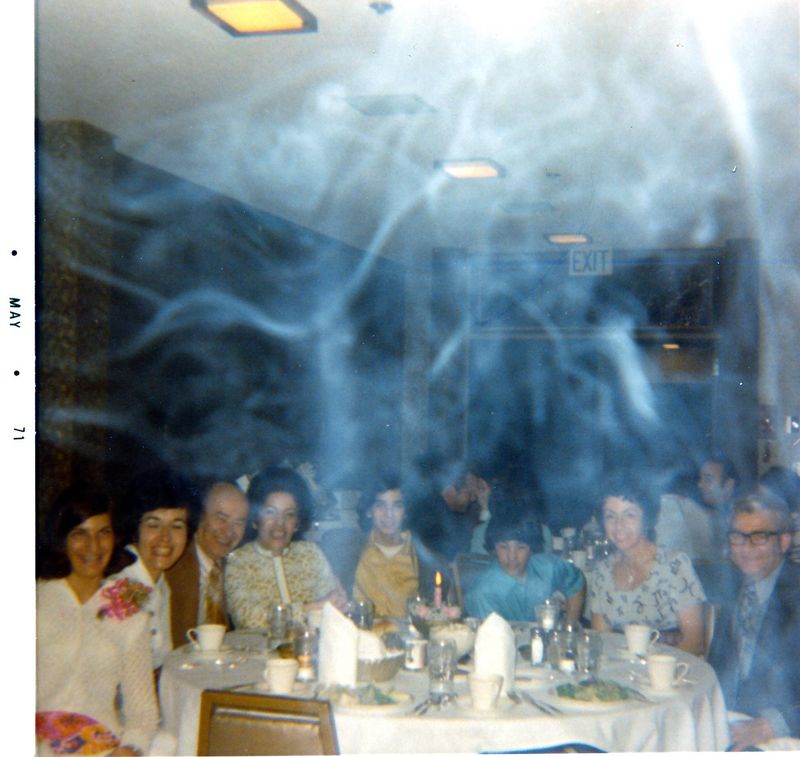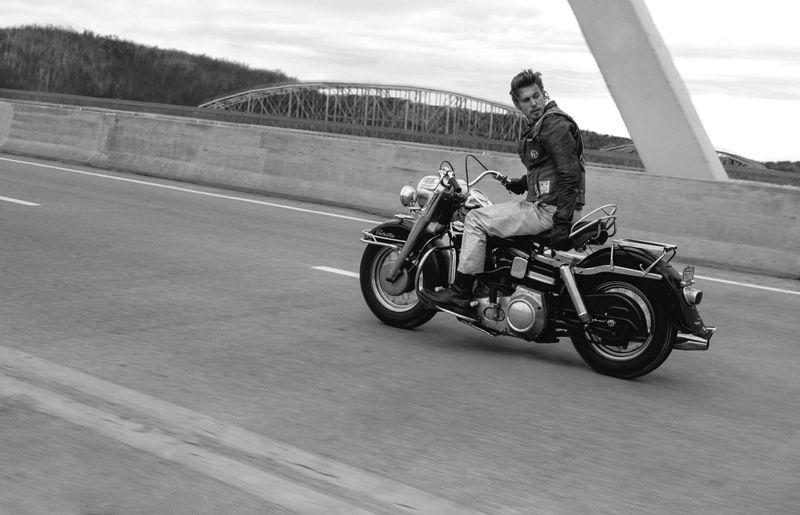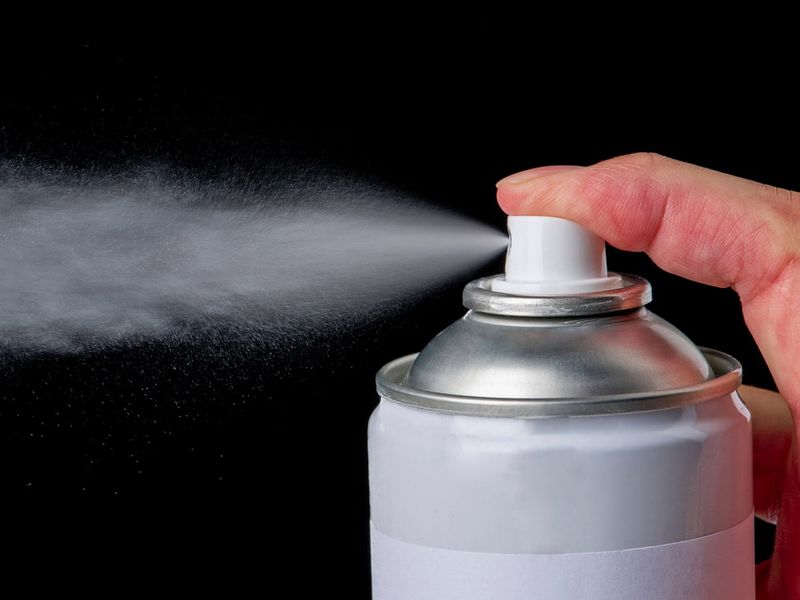The 1960s were a time of transformation, rebellion, and a whole lot of questionable choices. While some things from that era have become retro and beloved, others… well, let’s just say we’re glad they didn’t make it to 2025.
From casual habits to unsafe products, here are 17 normal things from the 1960s that are banned (or at least heavily restricted) today.
1. Smoking on Airplanes
Remember when planes were filled with clouds of cigarette smoke? In the 1960s, passengers could light up mid-flight, turning cabins into smoke-filled lounges. It was as common as ordering a drink.
Today, lighting a cigarette on a plane is unimaginable. Thanks to growing health concerns and the push for smoke-free environments, smoking on commercial flights is banned globally. The change has not only improved air quality but also passenger comfort and safety. The era of smoky skies inside airplanes is a distant memory, replaced by cleaner, healthier travels.
2. Asbestos in Construction Materials
Asbestos was once hailed as a miracle material for its fire-resistant properties, commonly found in insulation and building materials. In the 1960s, it was a staple in construction. However, the health risks, including deadly diseases like mesothelioma, changed its fate.
Today, asbestos use is banned or heavily restricted in most countries. This shift has significantly reduced exposure to its harmful fibers, protecting countless lives. Modern buildings now prioritize safety and health, steering clear of such hazardous substances. The transformation from trusted material to forbidden danger is profound.
3. Lead-Based Paints
In the colorful homes of the 1960s, lead-based paints were the norm. They adorned walls, toys, and furniture with vibrant hues. However, the dangers of lead poisoning, particularly affecting children’s brain development, led to a global ban.
Today, lead paint is a relic of the past, replaced by safer alternatives. This transition has safeguarded countless children from lifelong health issues. The once-ubiquitous lead-laden walls have been painted over with layers of protection and care, reflecting a growing awareness of health and safety.
4. Advertising Cigarettes on TV and Radio
Cigarette commercials were a fixture on television and radio in the 1960s, featuring everything from cartoon characters to glamorous actors. These ads permeated the airwaves, encouraging tobacco use.
However, the tide turned in 1971 when such advertising was banned in the U.S., a move that set a precedent for countries worldwide. The prohibition aimed to reduce smoking rates and protect public health, marking a significant shift in advertising ethics. The airwaves now focus on healthier choices, leaving the era of tobacco promotion behind.
5. Driving Without Seat Belts
Imagine hitting the open road without buckling up. In the 1960s, many vehicles lacked seat belts, and using them wasn’t mandated. It was a carefree time for drivers, albeit with risks. Today, seat belt laws are standard globally, enforced to enhance safety and minimize injuries.
The evolution from optional to obligatory reflects a commitment to road safety. Buckling up has become second nature, a simple act that saves lives. The transformation from freedom to a safety-first approach underscores a profound change in driving culture.
6. Drinking and Driving (Casually)
Once upon a time, the sight of someone drinking and then driving home was all too common. The 1960s were marked by a lax attitude towards drinking and driving, with enforcement often turning a blind eye.
Today, stricter DUI laws and increased public awareness have made such behavior socially unacceptable and legally punishable. The cultural shift toward responsible drinking has saved countless lives and fostered a more conscientious approach to alcohol consumption. The journey from casual disregard to strict regulation highlights society’s progress.
7. Lead in Gasoline
In the 1960s, “leaded” gasoline was the norm, with its distinct, pungent aroma filling the air at every gas station. It was believed to enhance engine performance. However, the environmental and health hazards, particularly its impact on neurological development, couldn’t be ignored.
As awareness grew, countries worldwide phased out leaded gasoline, paving the way for cleaner alternatives. The shift from lead-laden to unleaded fuels marks a significant step toward environmental conservation and public health protection.
8. Lawn Darts (Jarts)
Imagine a backyard game involving weighted darts with metal spikes—yes, that was lawn darts, or “Jarts,” in the 1960s. Popular at gatherings, they posed significant risks, leading to numerous injuries and even fatalities.
The outcry over safety led to their ban in the late 1980s. Today, safer alternatives have replaced these perilous toys, ensuring fun without fear. The evolution from dangerous pastime to responsible recreation reflects society’s growing awareness of safety, particularly in children’s games.
9. Corporal Punishment in Schools (in many countries)
In the 1960s, corporal punishment was a standard method of discipline in schools, with teachers wielding paddles or rulers. It was widely accepted, often seen as a way to enforce order.
However, as educational philosophies evolved, the focus shifted to more compassionate approaches. Today, corporal punishment is banned or heavily restricted in most developed countries, reflecting a commitment to children’s rights and emotional well-being. The transition from physical discipline to nurturing environments underscores a significant change in educational values.
10. Unregulated Child Car Seats (or No Seats at All)
In the 1960s, child car seats were either non-existent or rudimentary, often lacking proper restraints. Kids roamed freely in cars, a stark contrast to today’s stringent regulations. Modern child car seats, designed with safety in mind, are legally required, ensuring that children are protected during every journey.
The transformation from unrestrained travel to meticulously regulated safety highlights the advancements in automotive safety and parental awareness. This evolution has played a crucial role in reducing injuries and fatalities, prioritizing children’s safety on the road.
11. Mercury Thermometers (in many places)
Those silvery mercury thermometers were a household staple in the 1960s, their shimmering liquid mesmerizing, yet toxic. Widely used for their accuracy, they posed significant environmental and health risks. Today, many countries have banned their production and sale, opting for safer digital alternatives.
The shift from mercury to digital thermometers reflects a proactive approach to environmental conservation and public health. The once-common mercury thermometer is now a relic, reminding us of the ongoing journey toward safer, healthier innovations.
12. Public Use of DDT (Pesticide)
In the 1960s, DDT was the pesticide of choice, sprayed liberally over fields and even residential areas. It was considered a breakthrough in pest control. However, its ecological impact, particularly on bird populations, led to widespread bans in later years.
The prohibition of DDT marks a vital step in environmental preservation and sustainable practices. Today, more eco-friendly alternatives are used, reflecting our responsibility to protect the planet. The journey from wonder chemical to environmental threat illustrates the evolving understanding of ecological balance.
13. Smoking Indoors at Work or Restaurants
Once, the haze of cigarette smoke filled offices, restaurants, and even hospitals, a common sight in the 1960s. Smoking indoors was routine, a social norm that left spaces perpetually clouded. Today, indoor smoking bans are widespread, enhancing air quality and public health.
The transformation from smoke-filled rooms to smoke-free zones reflects a major cultural shift towards healthier living environments. The clean, fresh air we now enjoy indoors is a testament to the progress made in public health advocacy and awareness.
14. Toy Guns That Look Like Real Guns
In the 1960s, toy guns were eerily realistic, a thrilling yet risky plaything for children. They often resembled actual firearms, leading to dangerous misunderstandings. Today, regulations require toy guns to be visibly distinguishable with bright colors or tips. This change has minimized the risk of tragic incidents, prioritizing safety without sacrificing fun.
The evolution from realistic replicas to clearly marked toys highlights a commitment to child safety and public awareness. The playful nostalgia remains, now paired with caution and care.
15. Helmets Not Required for Motorcyclists (in many places)
Feel the wind in your hair—literally. In the 1960s, riding a motorcycle without a helmet was part of the thrill, considered a symbol of freedom. However, the risks became undeniable, leading to helmet laws in most places today. This shift emphasizes safety, reducing head injuries and fatalities.
The transition from carefree rides to safety-conscious journeys underscores a significant change in public safety priorities. The helmet has become an essential accessory, transforming the landscape of motorcycling culture and safety.
16. Spray Cans with CFCs (Chlorofluorocarbons)
In the 1960s, aerosol sprays containing CFCs were household staples, essential for those perfectly coiffed hairdos. The convenience came at an environmental cost, as CFCs were found to deplete the ozone layer. The global phase-out of CFCs, initiated in the late ’80s, marked a monumental step in environmental protection.
Today, eco-friendly alternatives dominate the market, reflecting a commitment to preserving our planet. The transition from ozone-depleting sprays to sustainable solutions highlights the progress in environmental awareness and responsibility.
17. Gender Discrimination in the Workplace (Explicitly Legal)
In the 1960s, workplace gender discrimination was not just commonplace—it was legal. Employers openly paid women less, denied promotions, and limited opportunities. The tide began to turn with laws like the Equal Pay Act, bringing about a slow but essential change.
Today, explicit gender discrimination is illegal, though challenges remain. The shift from blatant inequality to legal protection highlights a pivotal movement toward workplace equality and inclusiveness, encouraging a diverse and fair work environment for all genders.
